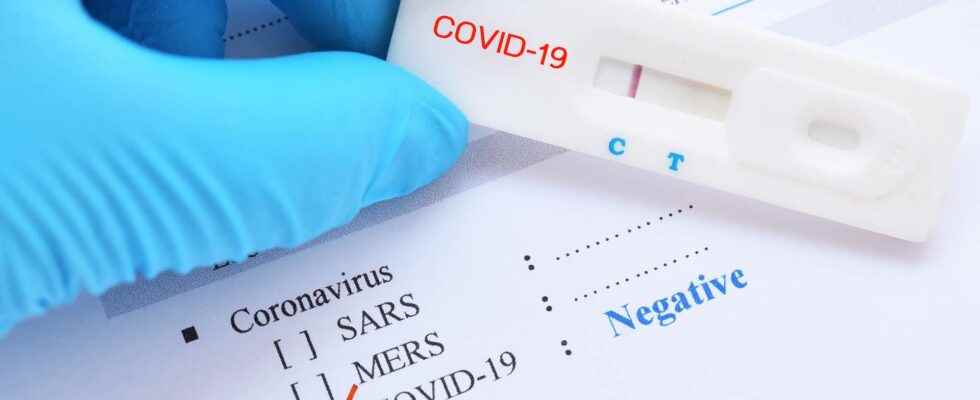Antigen tests, PCR tests, self-tests, saliva tests… How does each test work? How reliable are each of them? Futura takes stock.
the screening is a key element of the strategy to curb the spread of the virus. Knowing whether you are positive or not is essential to adapting your behaviors. Each of the available tests has advantages and disadvantages.
The RT-PCR test
the RT-PCR test represents the reference technique.
How does the test work? How reliable is it?
The test RT-PCR can detect the genetic material of the virus, its RNA. This is the only way to determine the exact nature of the variant. If done correctly, the probability of false-negatives or false-positives is almost nil.
How is the test carried out?
This type of test must be carried out in an analysis and medical biology laboratory. A nasopharyngeal swab is required. The act only lasts a few seconds, but it can be more or less unpleasant depending on the person (shape of the nose, individual sensitivity, sampler). Results are available within 24 hours.
When is the right time to perform the test?
This test can be performed at any time.
The antigen test
How does the test work? How reliable is it?
Antigen tests detect antigens, i.e. proteins produced by the virus. Since Monday January 3, 2022, it is no longer necessary to carry out a PCR test to confirm a positive antigen test.
If the person is a carrier of the virus, theself test can detect it in 80% of cases. If she is not a carrier, he can detect it in 99% of cases. In other words, false positives are extremely rare while false negatives are possible.
How is the test carried out?
Nasopharyngeal sampling with a swab is required, as for the RT-PCR test. The antigen tests have the immense advantage of giving a quick result, in just 15 to 30 minutes. They do not require complex laboratory equipment. They can be performed by doctors, midwivesdentists, masseurs-physiotherapists, nurses and pharmacists.
When is the right time to perform the test?
This test can be performed at any time.
self-test
How does the test work? How reliable is it?
The test detects viral proteins. Its reliability is the same as that of antigen tests: false positives are extremely rare while false negatives are possible.
How is the test carried out?
The self-test is to be carried out by the patient himself. A swab must be inserted into the nose. One of the advantages of self-test is that it is not necessary to insert the swab as deeply as for antigenic tests or for RT-PCR tests. The sample is then brought into contact with a solution and then deposited on the test itself. Two bands appear when the test is positive. Results are available in 15 to 30 minutes.
When is the right time to perform the test?
This test should not be performed by individuals who are case contacts or who have symptoms. These should move towards antigenic tests or RT-PCR tests, which are more sensitive. The self-tests are useful for people wishing to visit a fragile relative, for example.
The saliva test
How does the test work? How reliable is it?
This is a test RT-PCR on saliva and not nasopharyngeal sampling. Their reliability is slightly lower than that of RT-PCR tests on nasopharyngeal swabs.
How is the test carried out?
The patient should spit into a tube. All other steps are identical to the RT-PCR test by nasopharyngeal swab. Results are available within 24 hours.
When is the right time to perform the test?
This type of test is reserved for certain situations, when nasopharyngeal sampling is difficult or impossible. It can also be used in people asymptomatic as part of a screening performed in a school or health facility.
Interested in what you just read?
Subscribe to the newsletter Health question of the week : our answer to a question you ask yourself (more or less secretly). All our newsletters
